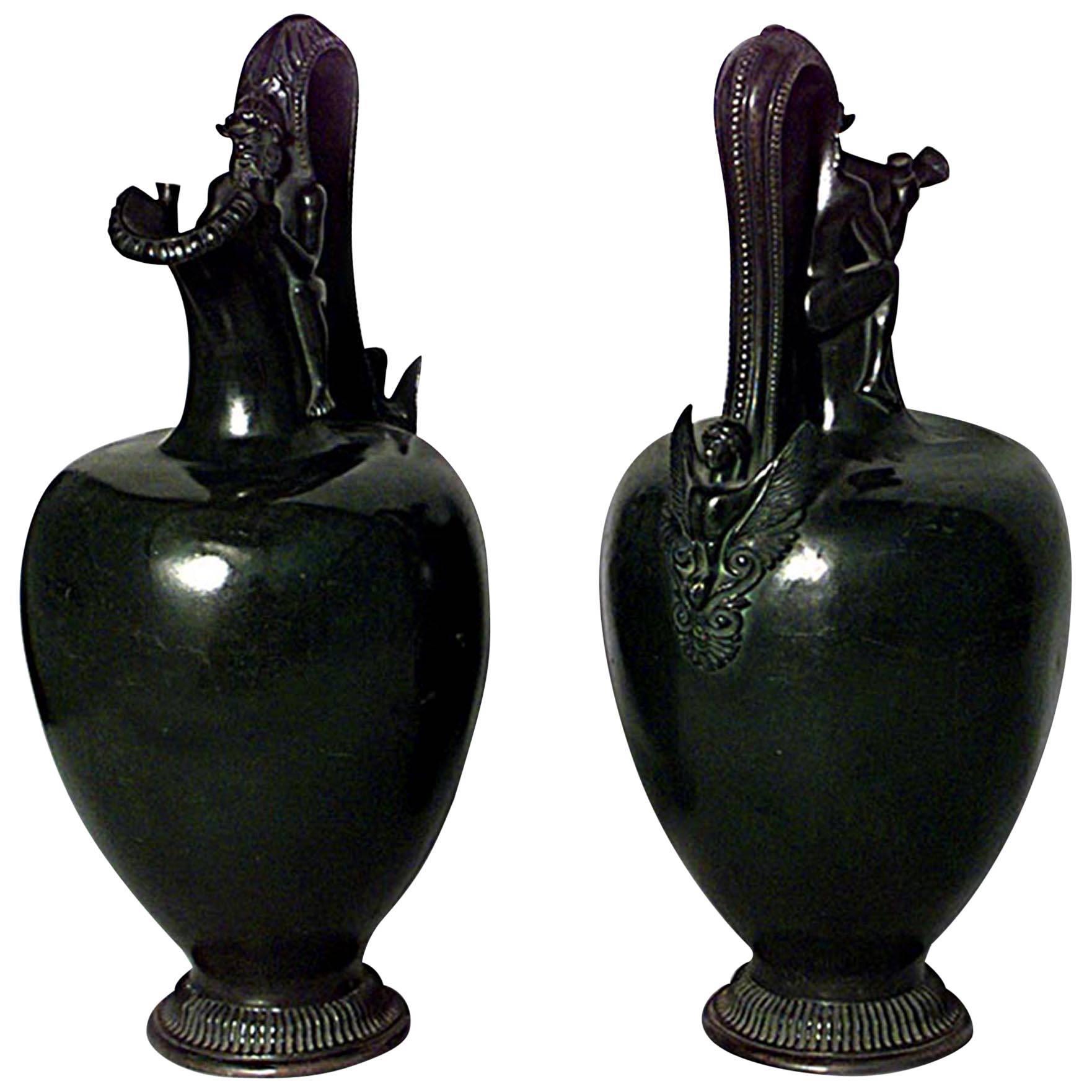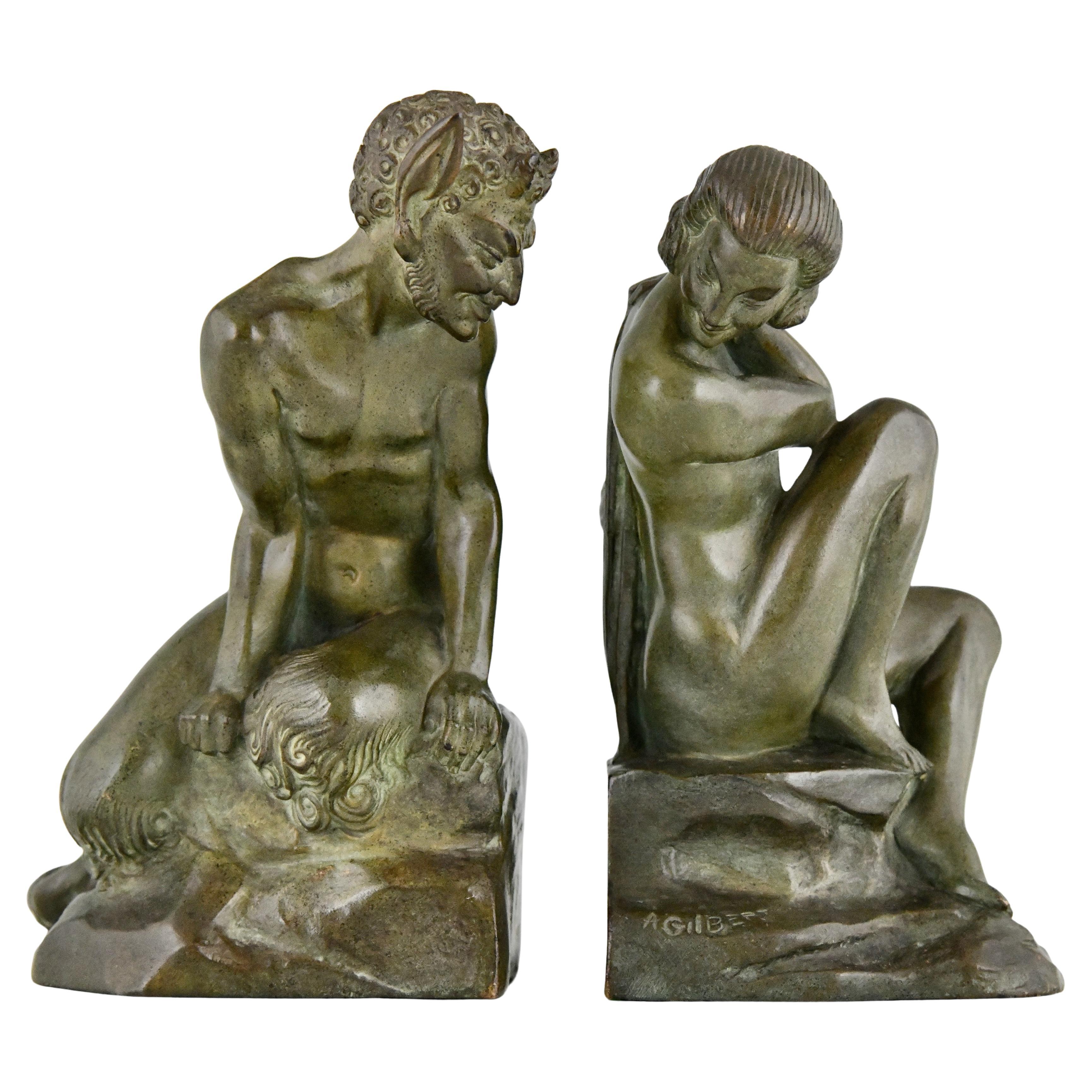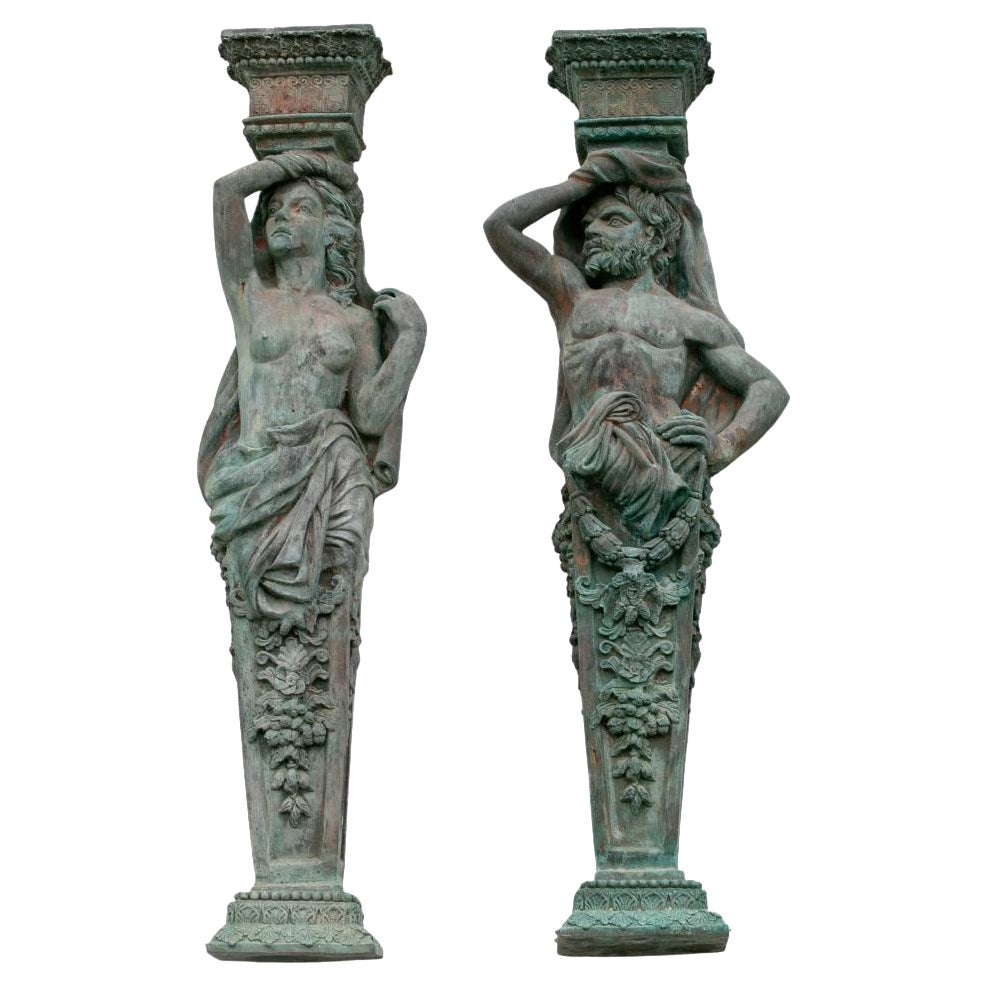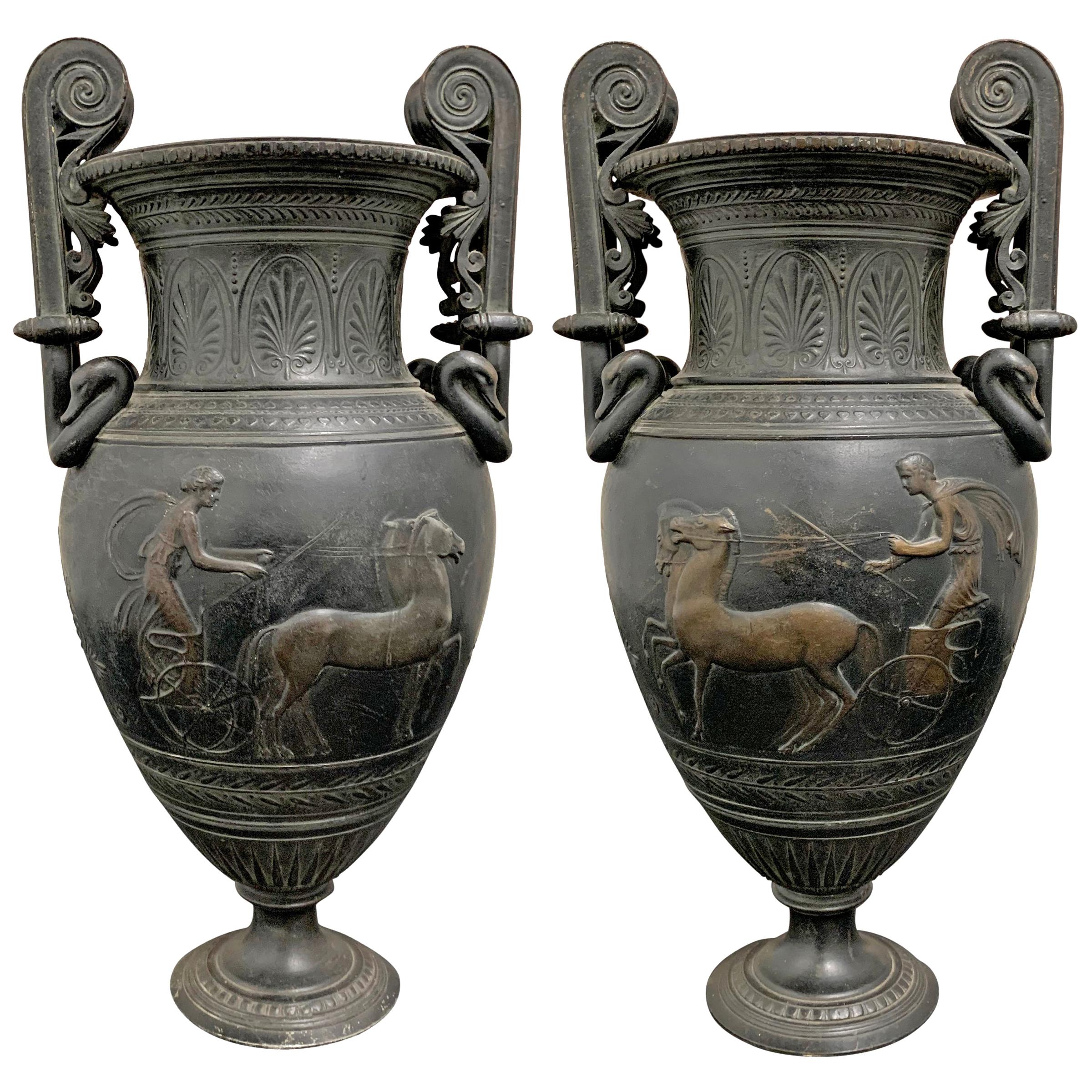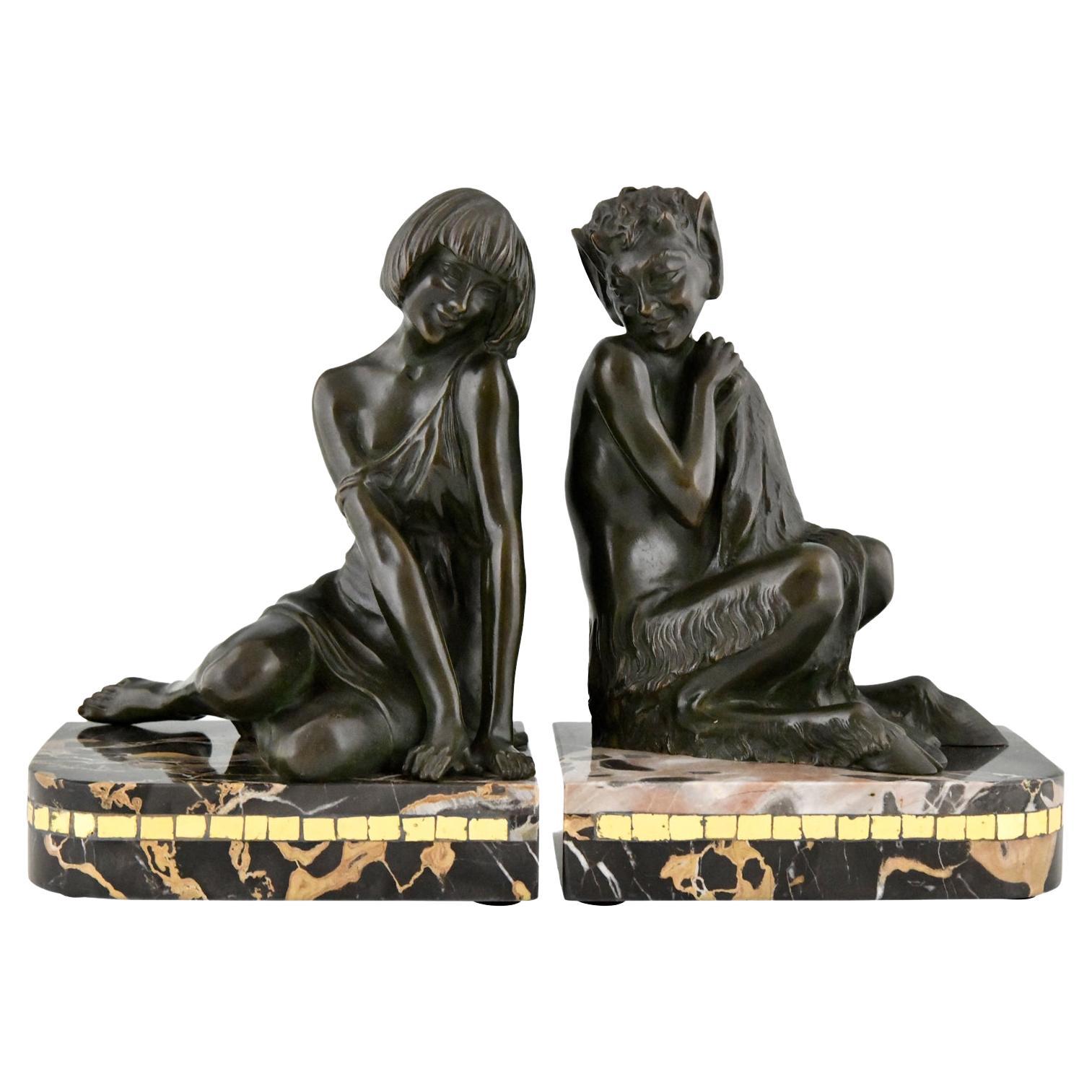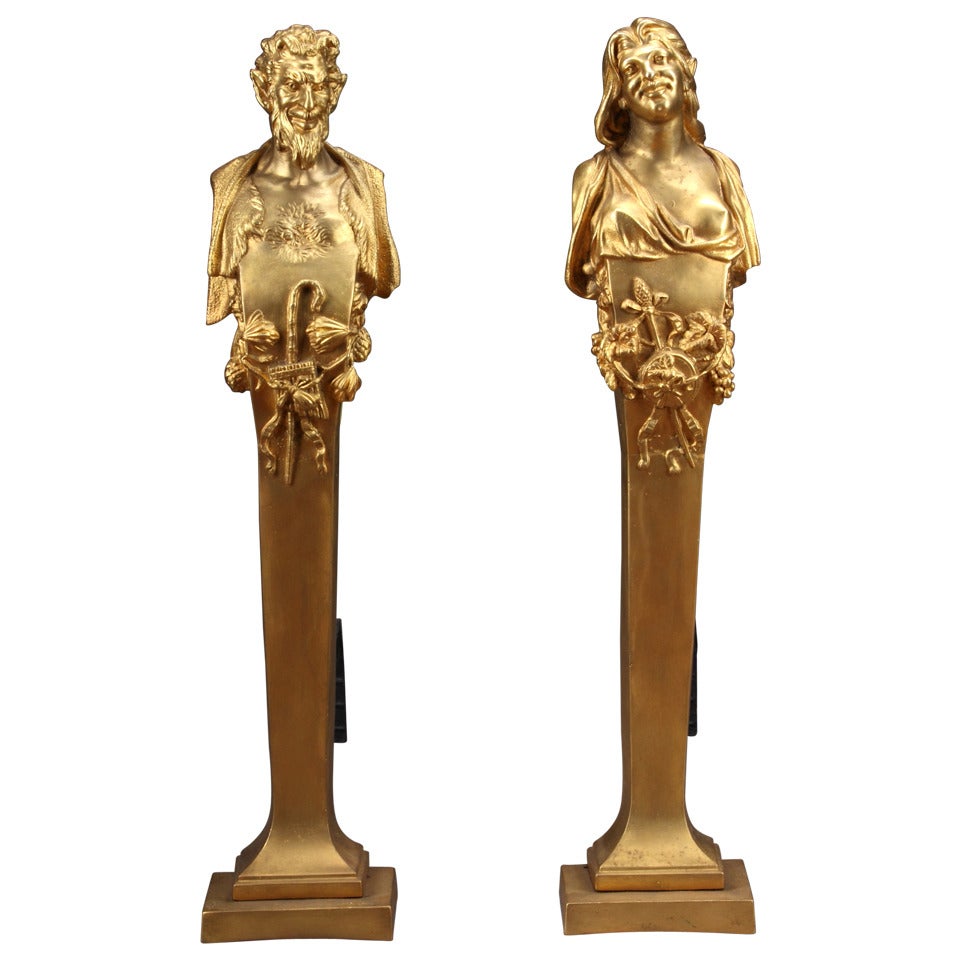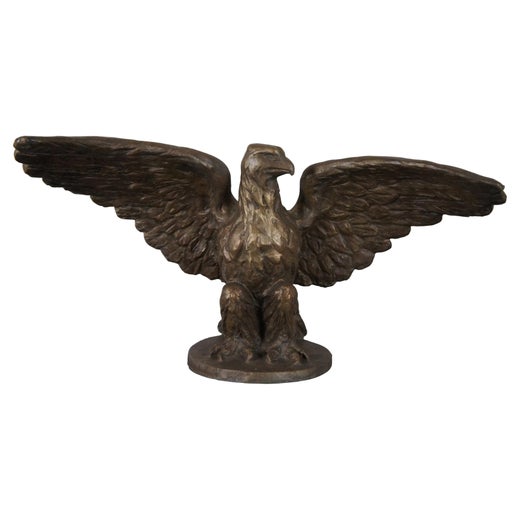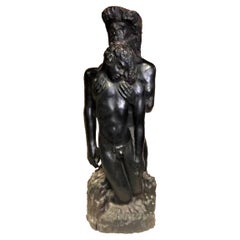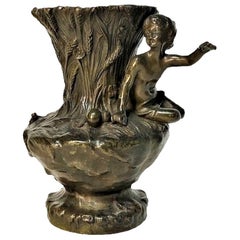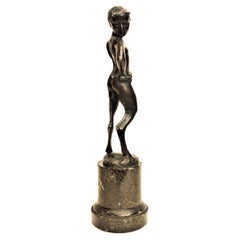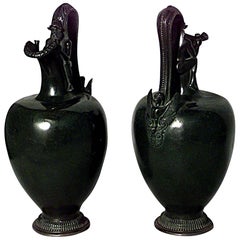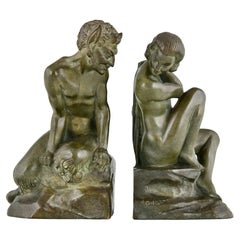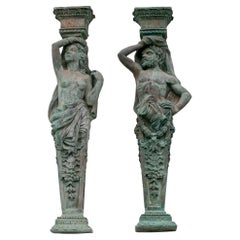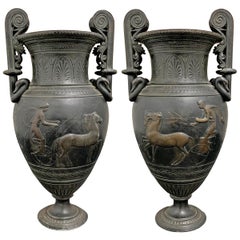Items Similar to Roman Bronze Works, a Pair of Bronze Vases with Nymph and Satyr Relief, 1900s
Want more images or videos?
Request additional images or videos from the seller
1 of 7
Roman Bronze Works, a Pair of Bronze Vases with Nymph and Satyr Relief, 1900s
$5,500per set
£4,203.64per set
€4,845.03per set
CA$7,877.06per set
A$8,633.02per set
CHF 4,508.33per set
MX$103,586.23per set
NOK 56,609.72per set
SEK 53,324.26per set
DKK 36,180.01per set
About the Item
American Renaissance period.
A Pair of Patinated Bronze Vases with Nymph and Satyr Bas-Reliefs by Roman Bronze Works, New York City, circa 1900.
Dimensions:
Height: 16 inches
Width: 5-1/2 inches
Depth: 6-3/4 inches
Roman Bronze Works, now operated as Roman Bronze Studios, is a bronze foundry in New York City. Established in 1897 by Riccardo Bertelli, it was the first American foundry to specialize in the lost-wax bronze casting method, and was the country's pre-eminent art foundry during the American Renaissance (circa 1876-1917).
- Creator:Roman Bronze Works (Maker)
- Dimensions:Height: 16 in (40.64 cm)Width: 5.5 in (13.97 cm)Depth: 6.75 in (17.15 cm)
- Sold As:Set of 2
- Style:American Craftsman (Of the Period)
- Materials and Techniques:Bronze,Patinated
- Place of Origin:
- Period:1900-1909
- Date of Manufacture:1900
- Condition:Wear consistent with age and use. We make our best effort to provide a fair and descriptive condition report. Please examine the photos attentively. Send us a message to request more details or discuss price.
- Seller Location:New York, NY
- Reference Number:1stDibs: LU2819314755551
Roman Bronze Works
Roman Bronze Works, now operated as Roman Bronze Studios, is a bronze foundry in New York City. Established in 1897 by Riccardo Bertelli, it was the first American foundry to specialize in the lost-wax casting method, and was the country's preeminent art foundry during the American Renaissance (1876–1917).
About the Seller
5.0
Gold Seller
Premium sellers maintaining a 4.3+ rating and 24-hour response times
Established in 1993
1stDibs seller since 2017
87 sales on 1stDibs
Typical response time: 4 hours
- ShippingRetrieving quote...Shipping from: New York, NY
- Return Policy
Authenticity Guarantee
In the unlikely event there’s an issue with an item’s authenticity, contact us within 1 year for a full refund. DetailsMoney-Back Guarantee
If your item is not as described, is damaged in transit, or does not arrive, contact us within 7 days for a full refund. Details24-Hour Cancellation
You have a 24-hour grace period in which to reconsider your purchase, with no questions asked.Vetted Professional Sellers
Our world-class sellers must adhere to strict standards for service and quality, maintaining the integrity of our listings.Price-Match Guarantee
If you find that a seller listed the same item for a lower price elsewhere, we’ll match it.Trusted Global Delivery
Our best-in-class carrier network provides specialized shipping options worldwide, including custom delivery.More From This Seller
View AllAmerican Modernism, a Pair of Nude Males, Hand-Carved Wood Sculpture, ca. 1940s
Located in New York, NY
About Sculpture
This homoerotic ebonized hand-carved wood sculpture of a pair of nude males, the older one supporting the falling down body of the youth, was created by an anonymous...
Category
Vintage 1940s American Modern Figurative Sculptures
Materials
Wood
Ignacio Gallo, Dancing with Satyr, Spanish Art Deco Silvered Bronze, circa 1920s
By Ignacio Gallo
Located in New York, NY
Ignacio Gallo (Spanish/French, 1850-1935) was a Spanish sculptor, who was active as a sculptor and engraver in Madrid and Paris in the interwar period. His works show animal scenes, ...
Category
Vintage 1920s Spanish Art Deco Figurative Sculptures
Materials
Bronze
French Beaux Arts, Patinated Bronze Figural Vase by A. Bofill, Ca. 1900
By Antoine Bofill
Located in New York, NY
Antoine Bofill (Spanish-French, 1875-1925) was a Spanish artist and member of the Animalier movement of the 19th century. Best known for his small, decorative bronze sculptures, Bofi...
Category
Antique Early 1900s French Beaux Arts Vases
Materials
Bronze
Austrian Jugenstil Patinated Bronze Sculpture of Fawn Youth, Ca. 1900
Located in New York, NY
Probably Austrian, this lovely Jugenstil desk-sized black-patinated bronze figurine on its original marble pedestal depicts a fawn youth, checking the size of his tail to see how muc...
Category
Antique Early 1900s Austrian Jugendstil Figurative Sculptures
Materials
Marble, Bronze
Antique Continental Patinated Bronze Fawn Candlestick, 19th Century
Located in New York, NY
Probably Italian, 19th Century patinated bronze candlestick in form of a dancing Fawn holding a candle-vessel in his hands, on its original wood base.
Category
Antique 1880s Italian Belle Époque Figurative Sculptures
Materials
Bronze
Emmanuel Villdnis, ‘Nelly’, French Art Nouveau Patinated Bronze Bust, ca. 1890
By Emmanuel Villdnis
Located in New York, NY
DETAILS
Signed and foundry mark on back.
DIMENSIONS
Height: 4-15/16 inches
Width: 2-5/16 inches
Depth: 2.25 inches
ABOUT THE SCULPTURE
This portrait bust is of Nelly Faner, famous burlesque dancer at the turn of the XX Century Paris.
ABOUT THE SCULPTORE
Emmanuel Villdnis (French, 1858 – 1914) was born to Italian parents in France, in 1858. He moved with the family to Piedmont, Italy, in March 1861; after the proclamation of the Kingdom of Italy.
Known in Italy as Villani, he studied at the Academy of Fine Arts Albertina in Turin from 1871 to 1880 alongside master-sculptor Odoardo Tabacchi. When Villanis graduated, he exhibited his first works in cities across Italy, notably his bust ‘Alda’ in Milan, in 1881.
Villanis returned to France in 1885, living and working in the Montmartre district of Paris and didn’t leave Montmartre until his death on August 28th 1914.
Villanis specialised in female bronze busts...
Category
Antique 1890s French Art Nouveau Busts
Materials
Bronze
You May Also Like
Pair of French Victorian Bronze Satyr Pitchers
Located in Queens, NY
Pair of French Victorian bronze pitcher shaped vases with satyr figures and side handles and green patina. (PRICED AS Pair)
Category
Antique 19th Century French Victorian Vases
Materials
Bronze
$9,500 / set
Art Deco Bronze Bookends Satyr & Nude by A. Gilbert & M. Guillemard 1925 France
By Andre Gilbert, Marcel Guillemard
Located in Antwerp, BE
A rare and elegant pair of Art Deco bronze bookends, created in 1925 by the French artist Andre Gilbert. These striking sculptures depict a dynamic satyr and a graceful nude female f...
Category
Vintage 1920s French Art Deco Bookends
Materials
Bronze
Pair of 1990s Cast Bronze Caryatid & Atlante Pilaster Columns Sculptures
Located in Marbella, ES
Pair of Neoclassical 1990s Cast bronze Atlas and Caryatid pilaster column half-body sculptures merging into a tapering pedestal pilaster columns.
Category
Late 20th Century Asian Statues
Materials
Bronze
Pair of Early 20th Century Bronze Roman-Style Urns
Located in Chicago, IL
A phenomenal pair of early 20th century French cast bronze Roman-style urns with volute handles decorated with goose heads, and a frieze in low-relief depic...
Category
Early 20th Century French Classical Roman Urns
Materials
Bronze
Art Deco Bronze Bookends Nymph and Faun by Pierre Le Faguays
By Pierre Le Faguays
Located in Antwerp, BE
Art Deco bronze bookends nymph and faun by Pierre Le Faguays. Patinated bronze on a Portor marble base with glass inlay. France 1925. These bookends are...
Category
Vintage 1930s French Art Deco Figurative Sculptures
Materials
Marble, Bronze
Pair of Gilt-Bronze Fire Place Figural Bronze Andirons depicting Pan and Nymph
Located in Tarzana, CA
A pair of late 19th century gilt bronze fireplace figural bronze andirons designed by Ernest coxhead.
Depicting Pan & Nymph,
circa 1890
Measur...
Category
Antique 19th Century European Andirons
Materials
Bronze, Iron
More Ways To Browse
Patinated Bronze Vase
Relief Vase
American Renaissance
Gold Relief Vase
Roman Vase Bronze
Nymphs Vase
Satyr Vase
Blue And White Porcelain Floral
Blue Hand Blown Glass
Black And White Italian Vase
Vintage Antique Signs
Japanese Vase 19th Century
Clear Vintage Vases
Monumental Antique Furniture
Green Vase Italy
German Keramik
Germany Keramik
White Italian Vases
